In an uncertain economic context, marked by inflation and financial market volatility, the question of nonprofit organizations’ sustainability has never been more crucial. In Switzerland, the nonprofit sector represents more than 7% of GDP and employs nearly 500,000 people according to the Federal Statistical Office (2023), while in France, the social and solidarity economy accounts for 10% of GDP with 2.4 million employees according to INSEE (2023). Recent data from the Observatory of Associative Life reveals a concerning situation: in 2023, nearly 15% of European associations reported major financial difficulties, and about 5% had to cease operations. In Switzerland, the 2023 ZEWO Foundation report indicates that nearly 200 certified organizations had to draw from their reserves to maintain their activities, while in France, the associative movement estimates that 8% of associations are in a situation of severe financial fragility.

1- New Challenges in the Nonprofit Sector
The philanthropic landscape is undergoing profound changes that are disrupting traditional models. According to the 2023 Philanthropy Barometer of the Fondation de France, donations in Europe experienced an average decline of 3.5% in real terms, primarily due to inflation. This trend is accompanied by a major transformation in institutional donor behavior who, faced with economic uncertainties, are reducing their multi-year commitments in favor of more punctual support.
Generational transition constitutes a major challenge for the sector. The “Next Gen Giving” study by Fidelity Charitable (2023) shows that 70% of traditional donors are over 65 years old, while millennials and Generation Z, who will represent 50% of donors by 2030, demonstrate radically different expectations. These new generations prioritize measurable impact, direct engagement, and innovative technological solutions.
The digital revolution also demands rapid adaptation from the sector. According to the Digital NGO Index 2023, 82% of organizations consider digital transformation a strategic priority, but only 35% have the necessary resources to implement it successfully. This transition requires significant investments in training, equipment, and IT security, estimated between 5 and 10% of organizations’ annual budgets.
Regulatory and transparency requirements are also increasing. The new European ESG reporting framework, applicable since 2024, imposes increased obligations on large organizations regarding non-financial reporting. Moreover, the multiplication of fraud cases in the sector (up 12% according to the European Fundraising Association) has led to strengthened controls and increased transparency demands from donors.
Climate change is emerging as a new major challenge. Organizations must now integrate environmental issues into their strategy, both to meet stakeholder expectations and to anticipate new regulations. The “Green NGO 2023” study reveals that 45% of organizations had to modify their practices to reduce their carbon footprint, generating additional costs estimated at 3-5% of their budget.
2- Building a Robust Sustainability Strategy
a. Diversification of Funding Sources
Analysis of the most resilient organizations reveals the importance of balanced diversification of revenue sources. The “Sustainable NGO Funding” study (2023) by the Stanford Social Innovation Review demonstrates that an optimal distribution should be structured as follows:
- Institutional funds (40%) constitute the most stable funding base, enabling long-term planning. This proportion is based on foundations’ and companies’ ability to maintain their commitments even during crises, as demonstrated during the COVID period when this type of funding decreased by only 5% compared to 15% for other sources.
- Individual donations (30%) provide essential flexibility and increased independence. This share reflects the importance of maintaining a direct link with civil society while taking into account the greater volatility of this funding source.
- Activity-generated revenue (20%) represents a growing funding lever. This proportion allows organizations to develop financial autonomy without compromising their social mission. Organizations that generate between 15 and 25% of their revenue through their own activities show better resistance to economic crises.
- Public grants (10%) complete the funding mix, offering institutional recognition while limiting dependence on public funding, which is often subject to political and budgetary uncertainties.
b. Innovation and Adaptation
Innovation becomes a strategic imperative for organizational sustainability. The development of hybrid models, combining revenue-generating activities with social mission, allows for strengthened financial autonomy while maximizing social impact. These models can take the form of service provision, training, or strategic partnerships with the private sector.
The exploration of new funding technologies opens promising perspectives. Crowdfunding platforms have enabled the collection of more than 2.5 billion euros for the European nonprofit sector in 2023, while cryptocurrency donations are experiencing 60% annual growth according to the CryptoGiving Report 2023.
Continuous team training and skills management become crucial. Organizations must invest in their employees’ professional development, particularly in project management, digital skills, and fundraising. A training budget representing 3 to 5% of the payroll appears to be a minimum to keep skills up to date.
The implementation of systematic strategic monitoring allows organizations to anticipate sector developments and quickly adapt strategies. This monitoring must cover regulatory, technological, societal, and environmental aspects.
3- Essential Vigilance Points
a. Financial Indicators
Cash flow management constitutes a crucial element of sustainability. Maintaining a reserve covering at least six months of operations allows organizations to absorb financial flow variations and face unexpected events. This recommendation is based on the analysis of recent crises, which shows that such a reserve level would have enabled 80% of struggling organizations to survive.
The operating costs to total budget ratio must be rigorously monitored. A ratio below 25% is generally considered optimal, allowing organizations to maintain donor confidence while ensuring effective management. This threshold is based on international standards and major certification bodies’ requirements.
Regular evaluation of donor acquisition costs allows for optimization of fundraising strategies. Best practices suggest a return on investment of at least 3:1 over three years for fundraising campaigns.
b. Governance and Organization
Strategic planning over 3-5 years constitutes the backbone of organizational sustainability. This planning must integrate risk scenarios and contingency plans, regularly updated according to context evolution.
The transmission of key knowledge and skills requires the implementation of formalized processes. Documentation of procedures, mentoring, and cross-training of teams allow for preserving the organization’s intangible capital.
The board of directors plays a central role in sustainability. Its composition must reflect the diversity of necessary skills (legal, financial, sectoral) and stakeholders. Regular renewal, planned over several years, ensures governance continuity.
Transparent communication with stakeholders strengthens the organization’s trust and legitimacy. Activity reports, impact assessments, and financial information must be easily accessible and regularly updated.
Conclusion
The sustainability of a nonprofit organization relies on its ability to adapt while remaining faithful to its mission. Faced with a rapidly changing environment, organizations must adopt a proactive approach, combining innovation and rigorous management. Current challenges, although complex, also offer opportunities for reinvention and strengthening. By placing social impact at the heart of their strategy while developing robust economic models, organizations can build the foundations for sustainable longevity.
Do you need expertise and support for your organization? Let’s talk about it!
To keep up to date with the latest articles, follow me on LinkedIn and subscribe to the newsletter.
Copyright © 2025 E | C Consulting – All Rights Reserved – To use this content, please ask for permission in advance and cite the source if agreed.
